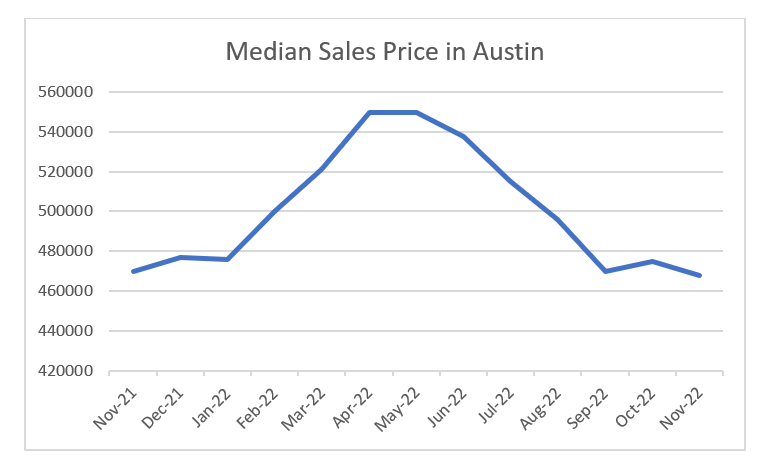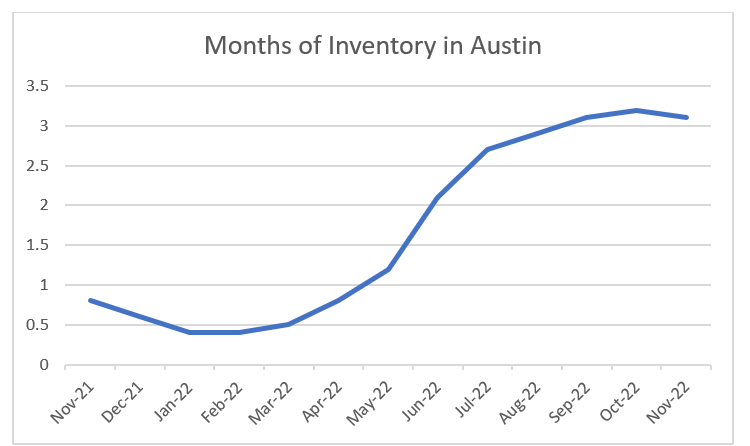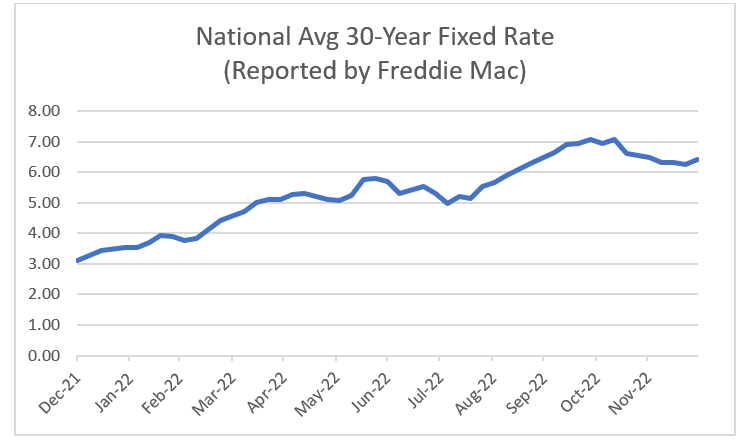Smart Investing: Trends to Watch in 2023 if You’re Planning to Buy

The housing market has been on the top of everyone’s mind since the beginning of the pandemic. Low interest rates paired with a significant desire to relocate to new surroundings and low inventory created an environment where bidding wars became the norm and home prices skyrocketed as buyers competed for the few available homes for purchase in the neighborhood. There was no disputing that mid-2020 to mid-2022 was a strong seller’s market.
Thankfully for buyers, a buyer’s market appears to be on the horizon (if it’s not already here). There’s been no shortage of news coverage that the red-hot housing market triggered by the pandemic saw a serious slow down over the last 7 months in 2022.
How do you know when the right time to buy is? The truth is, it’s nearly impossible to time the market perfectly, but understanding how to read these important trends from local and national data points allow buyers to make a better, more educated decision and drastically reduce the chance of a buyer buying at the wrong time!
Trend #1: Watch For The Median Sales Price In Your Area To Stabilize
Using Austin as an example, the most recent data available from the Austin Board of Realtors (ABOR) reveals that median sales prices in Austin-Round Rock MSA peaked in April and May of 2022 and began a downward trend thereafter. The commonly used investing phrase of “don’t try to catch a falling knife” describes buyers in this housing market perfectly. There may be unique opportunities available today where buyers don’t mind overpaying when they know prices are coming down. For example, your dream house in your dream neighborhood comes on the market and you plan to live there for a very long time so any short-term loss would be outweighed by long term gain. However, for the most part, buyers will want to wait to confirm prices are no longer dropping before buying.

From the last available report of Austin home sales, published December 15, 2022, the median sales price in November 2022 is 15% off the highs seen in April and May of 2022, but roughly the same the median sales price of a year ago and the median sales prices seen in September and October of 2022 (a great sign for buyers). If prices have stabilized (or even gone up a few percent) you may not have timed the bottom perfectly, but you can be confident that prices are beginning to recover and you’re still getting a relatively good price.
The reason it’s best to look at local data instead of national for this sample is that national data aggregates many locations, not relevant to your buying decision. Prices may still be falling in 50 different cities, but already stabilized in Austin. Focusing on local data, means you’ll see the trend first.
Trend #2: Watch for a Reduction or Stabilization in Inventory in Your Area
Home prices skyrocketed during the pandemic in part because nationwide housing inventories were (and continue to be) at historic lows. As background, the Great Recession, which took place around 2007 and 2008, caused a major blow to homebuilders as homebuilders dramatically reduced the amount of homes built each year. While homebuilders have slowly been increasing the amount of housing units they have been building, we have yet to reach the building levels seen pre-Great Recession and national housing shortage has grown astronomically. Depending on the news source, current estimates predict that there is a nationwide housing shortage of somewhere between 2 and 6 million. The lack of available housing supply helped fuel bidding wars where winning bids were regularly offering 20-30% above asking, but that’s no longer the case.

Housing Supply is tracked using a metric called “Months of Inventory”, which measures how long it would take to sell the properties currently on the market if no additional homes are added to the supply. If we look at Austin using the data provided by ABOR, we can see that there was less than 1 month of inventory at any given time as recently as May 2022 (before median sales price started to fall). There is currently 3.1 months of inventory, which is triple the amount of inventory at this time last year and the highest level since August 2017!
The good news is that we’re also seeing this trend stabilize. We’ve been right around 3 months of inventory since August of 2022 and despite the pandemic boost to homebuilders, real estate professionals still don’t see the supply shortage being solved in the near term. If the Months of Inventory begins to decrease, it’s a sign that more buyers are entering the market. It's important to buy while there’s plentiful supply to ensure the buyer has significant negotiating power, but you want to be sure supply isn’t still drastically rising, which would be a sign that more price cuts are on the way.
Trend #3: Watch For Nationwide Mortgage Rates To Start to Fall (but not too much)
Another major accelerant to the demand we saw in the housing market during the pandemic was the extremely low interest rate environment. During the height of the pandemic, it wasn’t unusual to hear a story from a friend or a relative about a 2.5% 30-year fixed rate loan they were able to get when purchasing a home. Because interest rates were so low, buyers were able to pay considerably more for properties since their interest payment only increased marginally and they were still easily qualifying for the loan.
Over the past year, interest rates more than doubled from the rates seen in January of 2022, which not only affected a borrower’s willingness to pay over asking price, but also affected their willingness to buy at all. Increases in interest rates affect housing affordability, and when paired with the elevated home prices of today, which are still 42% higher than they were in March 2020, it’s no wonder why we are seeing housing activity drop off.

Freddie Mac has a database of the average interest rate for a 30-year fixed rate loan dating back to 1971. The above chart depicts the rise in interest rate we experienced through 2022, and while this chart doesn’t depict the exact interest rate a lender would be able to quote a borrower based on their individual circumstances, it is very helpful in showing prospective buyer’s the general trend. As shown in the graph, nationwide interest rates have started to fall from the peak seen on November 10, 2022, but we are far from the lows seen during the pandemic. As interest rates continue to fall, expect more buyers to enter the market as affordability of monthly payments begins to increase. Consensus among real estate industry experts suggests that when the average interest rate starts to get closer to 5%, a significant number of buyers will be ready to buy. Understand that if you are waiting for lower interest rates before buying, you are not alone, and waiting for that extra .5% to fall may be the difference between no competition and significant competition.
Conclusion
Understanding these 3 trends can help turn your home purchase into a savvy investment. There are also other, more subjective trends, that you may want to research. You may also be interested in factors that make your neighborhood or city a great long-term investment (such as urban development opportunities). You may want to research why people are moving to your city from other parts of the country as we discussed here. Buying a primary residence isn’t always a decision that needs to make perfect mathematical sense (after all you should love the home you live in), but based on the trends we've seen the last 7 months, 2023 could be a great year to buy a home.
If LendFriend can help answer questions you might have on the housing market or how to get started with your homebuying journey, give us a call at 512.881.5099 or apply now, and one of our loan officers will be in touch as soon as we receive the application.
Note: For purposes of this article, we have only reviewed national and Austin-based data, but these same principals can be applied to any data set in any other location to suit your needs.

About the Author:
Mike Bernstein